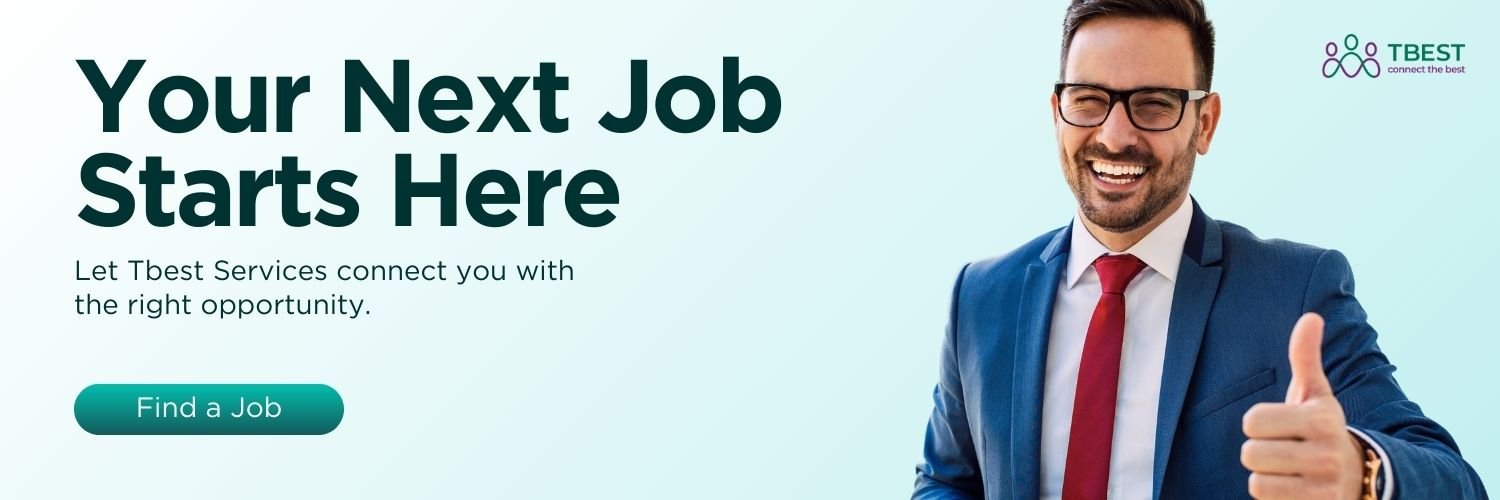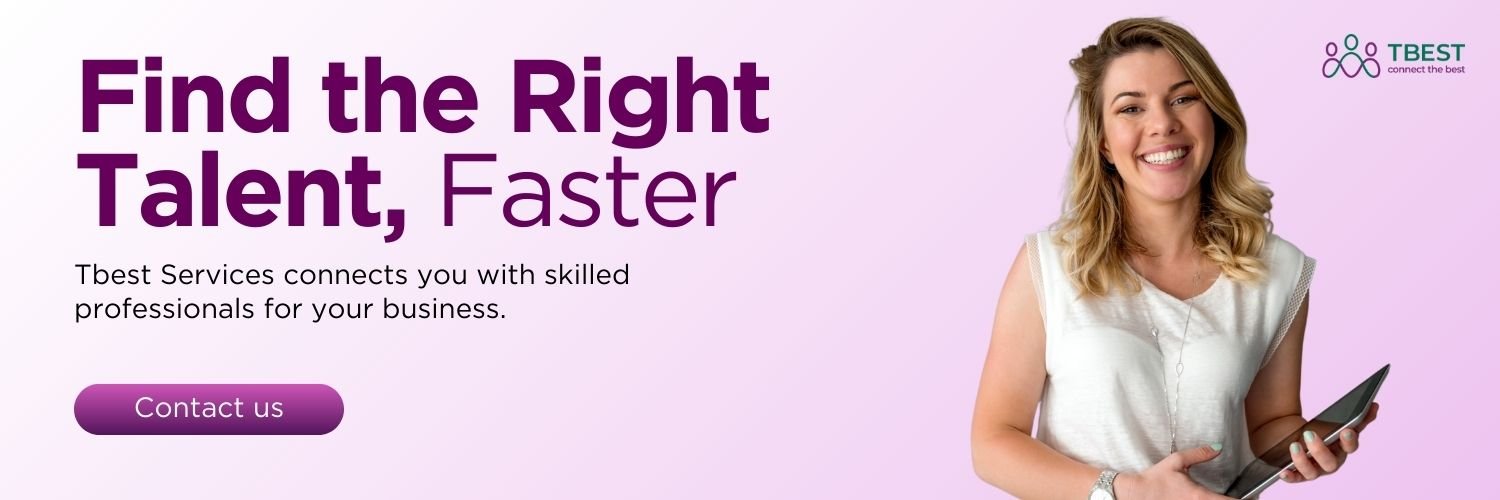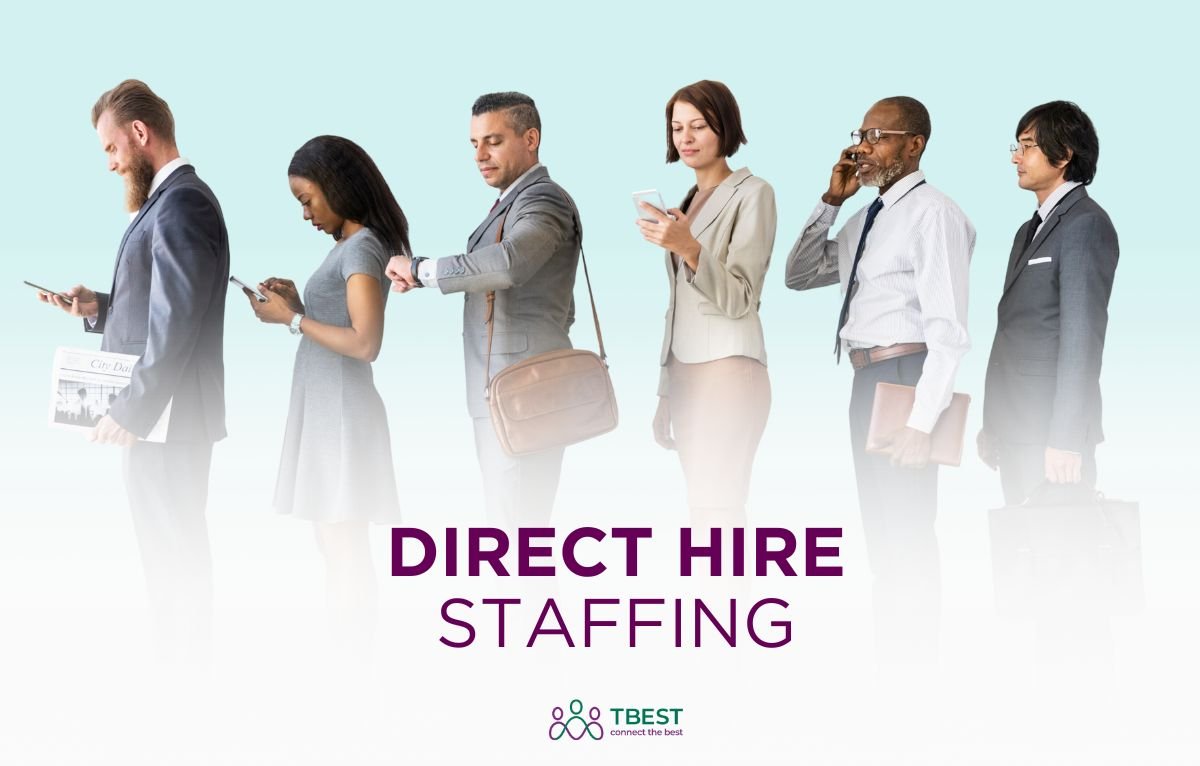
Hiring the right talent is one of the most critical challenges businesses face.
Companies must decide between staffing (temporary or contract workers) and direct hire (permanent employment) models.
Each approach serves different business needs, workforce goals, and financial considerations.
With fluctuating market demands, rising recruitment costs, and evolving employee expectations, organizations must carefully evaluate which model best aligns with their operational structure.
In this guide, we will break down the key differences, advantages, challenges, and real-world applications of staffing vs. direct hire, backed by industry research and trends.
What is Staffing?
Staffing refers to hiring temporary, contract, or contingent workers through a staffing agency.
These employees are not permanently added to a company’s payroll but are instead employed by the staffing firm.
Companies use this model for short-term projects, seasonal work, or when specialized expertise is needed for a limited time.
Key Features of Staffing
✔ Short-term or contract-based employment
✔ Staffing agency handles payroll, benefits, and compliance
✔ Ideal for fluctuating workloads and urgent hiring needs
✔ Reduces long-term financial commitments for businesses
Benefits of Staffing
- Workforce Agility
According to a study by the American Staffing Association (ASA), over 90% of businesses use staffing agencies to fill workforce gaps.
Temporary hiring allows businesses to scale up or down quickly based on project demands or seasonal spikes.
- Lower Hiring Costs
Staffing eliminates the expenses tied to full-time employment, including health benefits, retirement plans, and long-term commitments.
A Harvard Business Review study found that companies using staffing services reduced hiring costs by 25%-30% compared to full-time hires. - Access to Specialized Skills
For businesses needing niche expertise, staffing provides access to highly skilled professionals without the burden of long-term employment.
This is especially useful in IT, engineering, and healthcare industries, where projects demand temporary specialists.

Challenges of Staffing
Temporary workers often face challenges in establishing long-term commitment to a company, as their roles are designed to be short-term, making it difficult to build loyalty or invest in the organization’s long-term goals.
Additionally, businesses may need to dedicate time and resources to onboarding and training, yet these efforts may not yield lasting returns if the employee moves on quickly.
High turnover is another concern, as staffing employees frequently transition between projects or employers, leading to workforce instability and the continuous need for recruitment and training.
What is Direct Hire?
Direct hire refers to the process of recruiting employees for full-time, permanent positions.
These employees are placed directly on a company’s payroll, receiving full benefits, job security, and long-term career growth opportunities.
Key Features of Direct Hire
✔ Full-time employment with long-term stability
✔ Employee receives company benefits and perks
✔ Higher investment in training and career development
✔ Ideal for leadership roles and company culture building
Benefits of Direct Hire
- Stronger Employee Commitment
A study by the Society for Human Resource Management (SHRM) found that full-time employees are 60% more engaged in their work compared to temporary or contract workers.
Direct hire employees are more likely to be invested in company success and contribute to a strong workplace culture. - Lower Turnover & Retention Stability
High turnover disrupts business operations and increases hiring costs.
According to LinkedIn’s Workforce Report, companies that invest in direct hires experience 40% lower turnover rates compared to those relying on short-term staffing. - Enhanced Skill Development & Growth
Permanent employees develop deeper expertise in their roles, which benefits long-term business growth.
Investing in direct hires increases employee satisfaction and retention, reducing the need for continuous rehiring.

Challenges of Direct Hire
Direct hires come with higher upfront costs, including salaries, benefits, and onboarding expenses, making them a significant financial commitment for businesses.
The hiring process also tends to take longer, often stretching over several weeks or even months.
According to SHRM, the average time to fill a direct hire role is around 42 days, which can slow down operations when a position needs to be filled quickly.
Additionally, there is always the risk of making the wrong hire.
Bringing in an employee who is not the right fit can lead to long-term setbacks, including lost productivity, team disruption, and the added cost of rehiring and retraining.
Comparing Staffing vs. Direct Hire: Key Differences
Choosing between staffing and direct hire depends on business needs, financial flexibility, and long-term workforce planning.
| Factor | Staffing (Temporary/Contract Hire) | Direct Hire (Permanent Employment) |
| Employment Type | Short-term, contract-based | Full-time, long-term |
| Payroll & Benefits | Managed by staffing agency | Managed by employer |
| Cost Efficiency | Lower upfront costs, no long-term obligations | Higher upfront costs, long-term investment |
| Flexibility | High – scalable workforce | Low – long-term commitment |
| Hiring Speed | Fast – often immediate placements | Slow – takes weeks or months |
| Skill Development | Limited – temporary roles | High – career growth & training |
| Turnover Rate | Higher turnover, short-term workers | Lower turnover, higher retention |
| Company Culture Fit | May lack deep integration | Strong culture alignment |
When Should Businesses Use Staffing vs. Direct Hire?
When Staffing is the Best Choice
- Short-Term Project- If a company needs immediate, temporary support for a project or seasonal demand.
- Cost Control- When businesses want to reduce payroll expenses without committing to long-term salaries.
- Specialized Skills for Specific Tasks- This is ideal for IT, construction, and healthcare, where short-term expertise is required.
When Direct Hire is the Best Choice
- Long-Term Growth & Stability- If a company is building a core team that will grow with the organization.
- Leadership & Key Roles- Direct hire is best for senior management, executive, and culture-focused roles.
- Investing in Employee Retention- Companies that focus on long-term success and career development benefit from permanent hires.
Hybrid Workforce Strategies
Many companies today combine staffing and direct hire to build a well-balanced workforce.
A Deloitte report on workforce trends highlights that 70% of businesses use a mix of full-time employees and contingent workers to maintain both flexibility and stability.
Tech giants like Google and Microsoft frequently hire contract workers for specialized projects while ensuring that key talent remains in permanent positions.
In the healthcare sector, hospitals depend on temporary nurses to handle peak demand periods but invest in direct-hire physicians and senior staff to maintain consistency in patient care.
Startups and small businesses often turn to staffing solutions during rapid expansion phases and later shift to direct hires to build long-term stability.
This hybrid workforce model enables businesses to stay competitive, manage costs effectively, and scale operations without compromising efficiency.
Which Hiring Model Works for You?
There is no one-size-fits-all answer when choosing between staffing and direct hire.
Each model offers unique advantages and challenges based on business needs, workforce goals, and financial capacity.
For immediate hiring needs and flexibility, staffing is a great solution. For long-term business growth and stability, direct hire is the better option.
Many companies now adopt a hybrid hiring strategy to balance cost efficiency with workforce stability.
Need expert hiring support? TBest Services connects businesses with the right talent—whether temporary, contract, or full-time.

